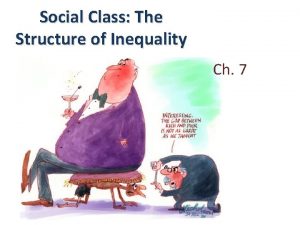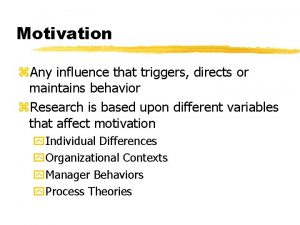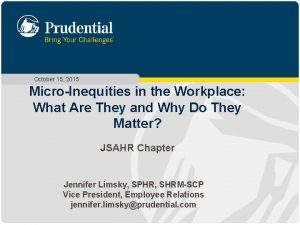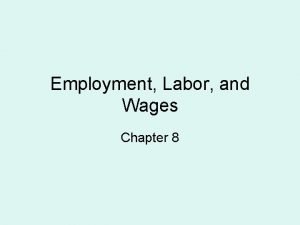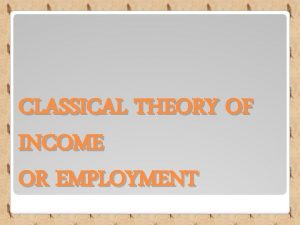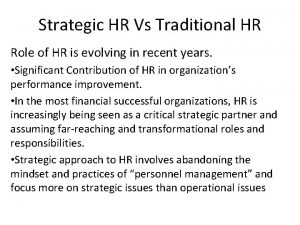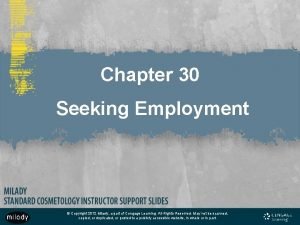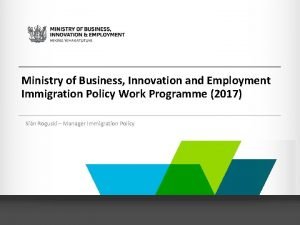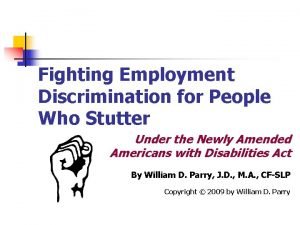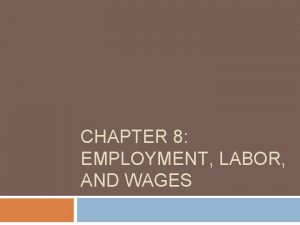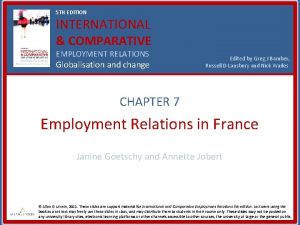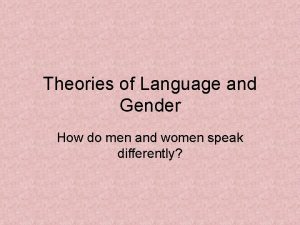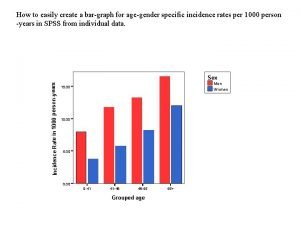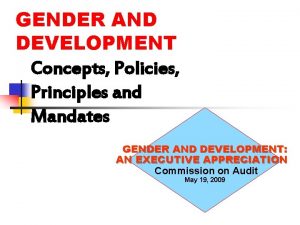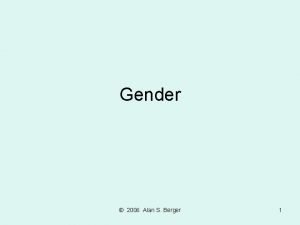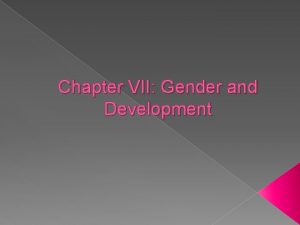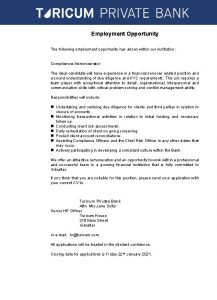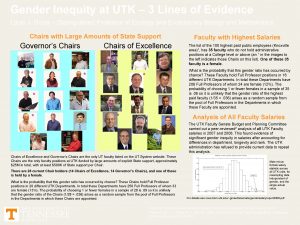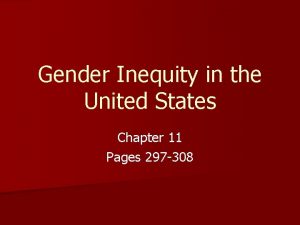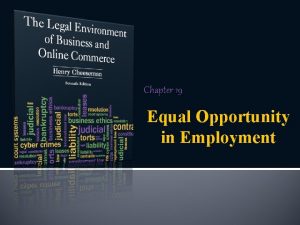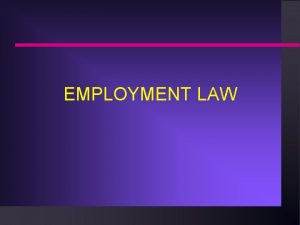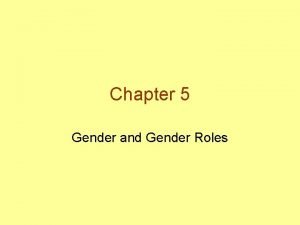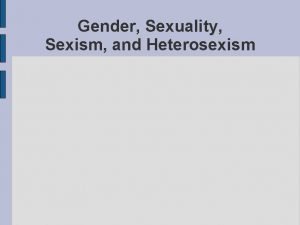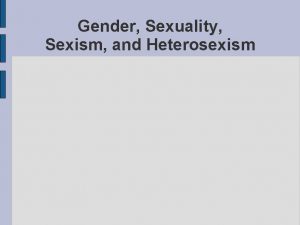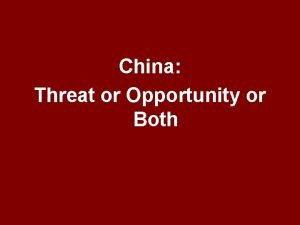Gender and Employment Opportunity Inequity in China What



































- Slides: 35

Gender and Employment Opportunity Inequity in China ——What the current law can do and not do? Jing Liu Central University of Finance and Economics

Outline I. Introduction II. Gender employment opportunity inequity situations in china: Trends and Stylized facts III. What Chinese laws say about gender discrimination in employment opportunity: an analytical reading of relevant Chinese legislations IV. Existing problems with china’s antiemployment : the possible discrimination mechanism

Introduction Discrimination in employment widely exists in China’s workplace. Currently, employment opportunity inequality, wage discrepancy, and sexual harassment are main manifestations of gender discrimination in China. The inequity in employment opportunity is reflected in the fact that women in China generally find it harder to find, and easier to lose, a job than men, which is also known as “the last hired and the first fired” phenomenon.

Time Zone of the Gender Hiring Discrimination in China 『第一PPT』— WWW. 1 PPT. COM Economic Reform A economy market without effective punishment; Discrimination begins Economic Reform Law breakups Time stone I Milestone I Law of the People's Republic of China on Promotion of Employment was released Law Breakups The Chinese Labor Law; The Law on the Protection of Rights and Interests of Women The future The National Program on the Development of Chinese Women (20112020) Milestone II The first gender discrimination lawsuit in china Time stone II The future 第一PPT HTTP: //WWW. 1 PPT. COM

Ⅱ. The Gender Employment Opportunity Inequity in China 2. 1 Trends 2. 2 Stylized facts

2. 1 Trends 2. 1. 1 Gender discrimination are widely exists when finding a job in China since the economic reform; 2. 1. 2 Some cheering changes have taken place in China in recent years; 2. 1. 3 the style of discrimination has changed from overt to recessive, while the situation might be even worst.

2. 1. 1 Gender discrimination are widely exists According to data in the Third Chinese Women's Social Status Investigation, jointly carried out in 2010 by the All-China Women's Federation (ACWF) and the National Bureau of Statistics of China, more than 72 percent of women had a clear perception of "not being hired or promoted because of gender" discrimination. According to a 2011 survey by the Women's Development Department under the All-China Women's Federation (ACWF), 56. 7 percent of female college students polled believed that women have less opportunities in the job market while 91. 9 percent of them said they have felt discriminated against by employers because of their gender. Why so many women choose to be silence about this inequality?

2. 1. 2 Some Cheering Changes u Tolerance has gradually worn out and women have grown impatient to voice their call for anti -employment discrimination policies;

First Gender Discrimination Lawsuit in China Juren Education Group stated “prefer man” on the job advertisement. 2012 -7 -11, Cao Ju brought this case to the Haidian court in Beijing. The litigation was launched by a girl named Cao Ju, who recently suffered gender discrimination in the process of job-hunting, and aims to raise public awareness of the controversial issue and to urge women victims to voice their protest.

First Gender Discrimination Lawsuit in China After one year in 2013 -9 -10, the Haidian court finally accept Caoju’s case. China saw its first lawsuit case against apparent gender discrimination in job recruitment.

2. 1. 2 Some Cheering Changes u Tolerance has gradually worn out and women have grown impatient to voice their call for anti -employment discrimination policies; u The lawmakers have made much progress; u The department and local government began to realize and try to do something; u Job advertisements, which provide specific gender, marriage status, height and outlooking are less and less to be seen in the overt recruitment , such as the famous Recruitment Site.

“Two Sessions” Deputies, Members Focus on Gender Discrimination, 2013. 3 Deputies to the National People's Congress (NPC) and members of the Chinese People's Political Consultative Conference (CPPCC) National Committee proposed during the annual NPC and CPPCC sessions in Beijing in March that the public should pay more attention to ensuring gender equality in employment.

ACWF, 2013 The Rights and Interests Department of the All-China Women's Federation (ACWF) has announced the organization's support for the female college students who have protested the gender discrimination in some companies' employment processes in eight cities, including Shanghai and Guangzhou, on January 31, 2013

2. 2 The Gender Employment Opportunity Inequity in China: Some stylized facts 2. 2. 1 Who are the most vulnerable group to meet the gender opportunity inequality? 2. 2. 2 Who provide the discrimination?

2. 2. 1 Who are the most vulnerable group? According to data in the Third Chinese Women's Social Status Investigation: the ratios of unmarried women or married women without children who suffered discrimination were the highest.

2. 2. 2 Who provide the discrimination? The government: The enterprise: The society: Gender Role Socialization

Why? Through the economic angle: a tough employment situation a market economy where there is ineffective punishment of gender discrimination in employment employers in pursuit of profit maximization refused women because female workers' fertility increased labor costs.

Ⅲ. What Chinese laws say about gender discrimination in employment opportunity I. The principle regulation of equal opportunity of employment II. The special regulation of gender employment discrimination III. The basic Mechanism of Judicial Remedies

What’ the related chinese law? General Principles in the Chinese Constitution The Chinese Labor Law(1995) The Law on the Protection of Rights and Interests of Women of People‘s Republic of China(first released in 1995, revised in 2005) Law of the People's Republic of China on Promotion of Employment(2008) The Labor Contract Law(2008) 2021/9/9

Milestone I Law of the People's Republic of China on Promotion of Employment, 2008 general statements about the discrimination; u Specific articles about gender employment discrimination; u Obscure statements about how to fight for the discrimination. u

3. 1 The principle regulation of equal opportunity of employment General Principles in the Chinese Constitution The Chinese Labor Law(1995) Law of the People's Republic of China on Promotion of Employment(2008) 2021/9/9

3. 1 The principle regulation of equal opportunity of employment General Principles in the Chinese Constitution Article 33 of the Constitution provides that “all citizens of People's Republic of China are equal before the law. ” Article 4 of the Constitution provides that “all nationalities in the People's Republic of China are equal. . . the state protects the lawful rights and interests of the minority nationalities and upholds and develops the relationship of equality, unity and mutual assistance among all of China's nationalities. . . discrimination against. . . any nationality is prohibited. ” the Chinese Labor Law,1995 Article 3 states that “workers enjoy the rights to equal opportunities of employment and choice of jobs. ” 2021/9/9

3. 1 The principle regulation of equal opportunity of employment Law of the People's Republic of China on Promotion of Employment, 2008 Article 3 The workers enjoy the right to employment on an equal footing and to choice of jobs on their own initiative in accordance with law. In seeking employment, the workers shall not be subject to discrimination because of their ethnic backgrounds, races, gender, religious beliefs, etc. Article 26 When an employing unit recruits persons or when a job intermediary engages in intermediary activities, it shall provide persons with equal opportunities and fair conditions for employment, and it shall not discriminate against anyone in this respect.

3. 2 The special regulation of gender employment discrimination General Principles in the Chinese Constitution the Chinese Labor Law,1995 《The Law on the Protection of Rights and Interests of Women of People‘s Republic of China》,1995, 2005 Law Of The People's Republic Of China On Employment Contracts, 2008 Law of the People's Republic of China on Promotion of Employment, 2008 2021/9/9

3. 2 The special regulation of gender employment discrimination General Principles in the Chinese Constitution Article 48 of the Constitution provides that “[w]omen in the People's Republic of China enjoy equal rights with men in all spheres of life, political, economic, cultural and social and family life. The state. . . applies the principle of equal pay for equal work for men and women alike and trains and selects cadres from among women. ” This provision provides explicit equal protection for women in employment from two perspectives: “equal pay for equal work” guarantees non-discriminatory treatment on compensation, and “trains and selects cadres from among women” ensures nondiscriminatory treatment on privileges of employment in terms of promotion. 2021/9/9

3. 2 The special regulation of gender employment discrimination the Chinese Labor Law,1995 Article 12 provides that “with regard to employment the workers shall not be discriminated in aspects of nationality, race, sex, and religious beliefs. ” Article 13 further provides that “ women enjoy the equal rights of employment as men and the practice of refusing employment to women based on gender grounds or raising the employment standards for women is not allowed except when the job or work posts are not suitable for women as provided for by the States. ” 2021/9/9

3. 2 The special regulation of gender employment discrimination 《The Law on the Protection of Rights and Interests of Women of People‘s Republic of China》,1995, 2005 Article 2 stipulates that women shall enjoy equal rights with men in all aspects of political, economic, cultural, social, and family life and the State takes the necessary measures to eliminate all forms of discrimination against women. Article 22 provides that the State guarantees that women enjoy equal rights with men to work and to social security. Article 23 provides that except for jobs not suitable for women employees, no employers shall refuse to employ a woman or raise the employment standard for women because of their gender. Articles 26 and 27 during female employees’ marriage, pregnancy, maternity leave, and baby-nursing, and an employer shall not dismiss female staff and workers or unilaterally terminate labor contracts with them.

3. 2 The special regulation of gender employment discrimination Law Of The People's Republic Of China On Employment Contracts, 2008 Article 42 An Employer may not terminate an employment contract …if the Employee: … Is a female employee in her pregnancy, confinement or nursing period;

3. 2 The special regulation of gender employment discrimination Law of the People's Republic of China on Promotion of Employment, 2008 Article 27 The State guarantees that women enjoy equal right to work as men. When an employing unit recruits persons, it shall not refuse to employ women or raise recruitment standards for females by using gender as an excuse, except where the types of work or posts are not suitable for women as prescribed by the State. When an employing unit recruits female workers, it shall not have such provisions as restrict female workers from getting married or bearing a child included in the labor contract.

3. 3 The basic Mechanism of Judicial Remedies Law of the People's Republic of China on Promotion of Employment, 2008 Article 9 Trade unions, Communist youth leagues, women's federations, disabled persons' federations and other public organizations shall assist the people's governments in carrying out the promotion of employment and, in accordance with law, protect the workers' right to work. Article 62 Where anyone practices discrimination in employment in violation of the provisions of this Law, the workers concerned may lodge a lawsuit in the people's court.

Ⅳ. Problems in Enforcing Existing Laws The first problem is the vague definition and insufficient coverage of employment opportunity discrimination. The second problem is the lack of operability , as the rules are too principle, not specific. The third problem is the lack of effective punishment mechanism on the employer and assistance measures on the females. 2021/9/9

Ⅳ. Problems in Enforcing Existing Laws The Hidden Reason But this is only the tip of the iceberg. The real reason is the insufficient awareness of government and law makers on the social externality of the women’ responsibility of bearing. All the related laws are just “treat the head when the head aches, treat the foot when the foot hurts -- no overall plan for a fundamental transformation”.

Should women undertake all the responsibility of child bearing? If not. Then the law should not only focus on women. Actually, some protective measures might induce some further discrimination. 2021/9/9

The future The National Program on the Development of Chinese Women (2011 -2020), recently issued by China's State Council, the country's cabinet, states that China will over the next ten years strive to promote women's genderequal labor rights and to eliminate gender discrimination in the workplace.

Still a long road to go
 Class inequity
Class inequity Underreward inequity
Underreward inequity Micro inequity exercises
Micro inequity exercises Strategic gender needs and practical gender needs
Strategic gender needs and practical gender needs Opportunity assessment plan example
Opportunity assessment plan example Veteran employment opportunity act
Veteran employment opportunity act Equal opportunity illinois
Equal opportunity illinois Informational opportunities
Informational opportunities What does the short run phillips curve show
What does the short run phillips curve show Snap employment and training program texas
Snap employment and training program texas Chapter 8 employment labor and wages
Chapter 8 employment labor and wages Classical theory of income and employment
Classical theory of income and employment Traditional hr functions
Traditional hr functions The typical independent salon has about
The typical independent salon has about Sian roguski
Sian roguski Jobs for stutterers
Jobs for stutterers Anishinabek employment and training services
Anishinabek employment and training services Moodfx
Moodfx Gila river employment and training
Gila river employment and training Chapter 8 employment labor and wages
Chapter 8 employment labor and wages International and comparative employment relations
International and comparative employment relations Deborah tannen difference theory
Deborah tannen difference theory Snow white different versions
Snow white different versions Gender-neutral housing pros and cons
Gender-neutral housing pros and cons Judith butler performative acts and gender constitution
Judith butler performative acts and gender constitution Gender and interpersonal communication
Gender and interpersonal communication Gender graph
Gender graph Gender-role development
Gender-role development Gender and development principles
Gender and development principles Stratification of gender
Stratification of gender Objectives of gender and development
Objectives of gender and development Deficit theory lakoff
Deficit theory lakoff Strengths of schema theory
Strengths of schema theory Dynamic approach language and gender
Dynamic approach language and gender Centre for gender diversity and inclusion statistics
Centre for gender diversity and inclusion statistics What is the study of communication, gender and culture
What is the study of communication, gender and culture
